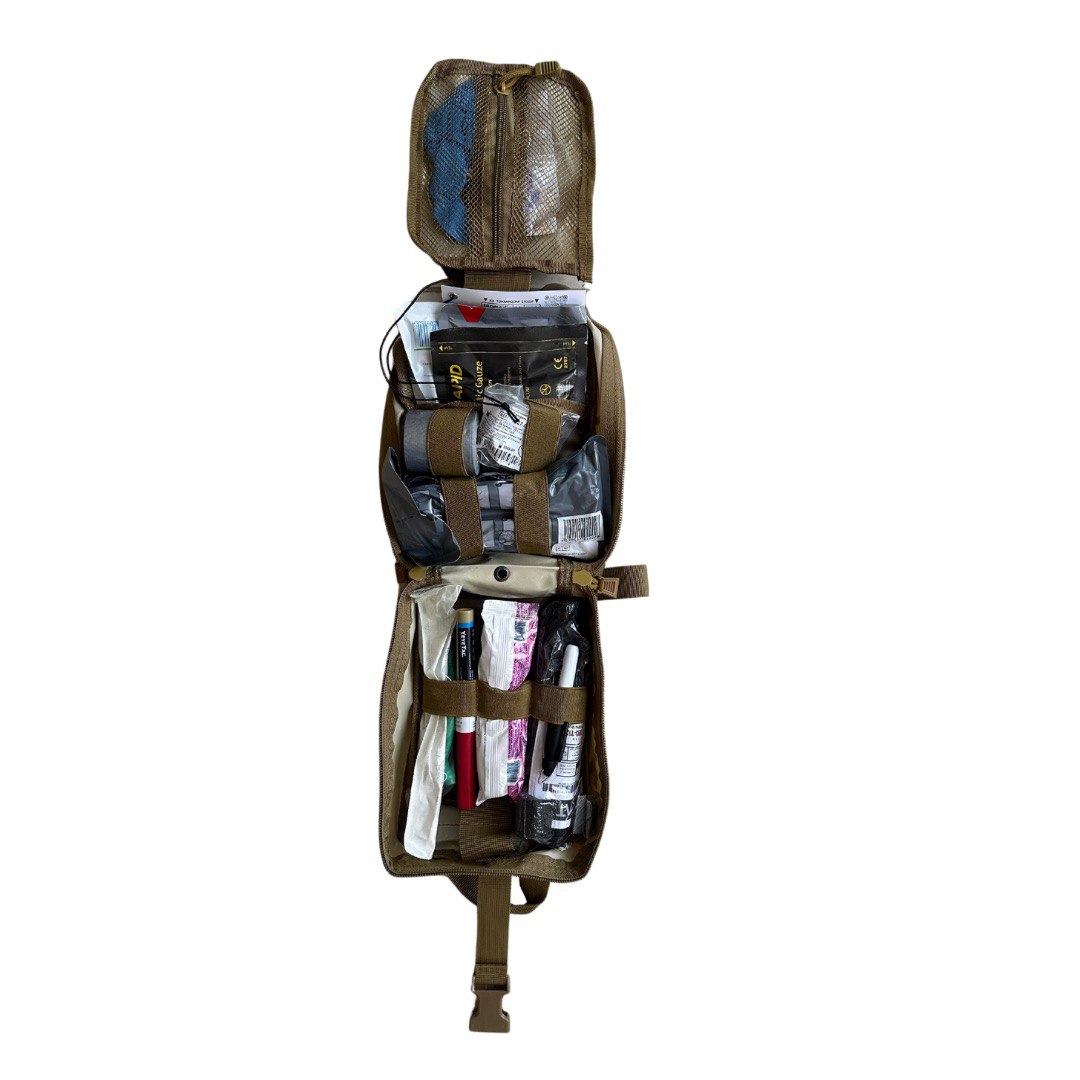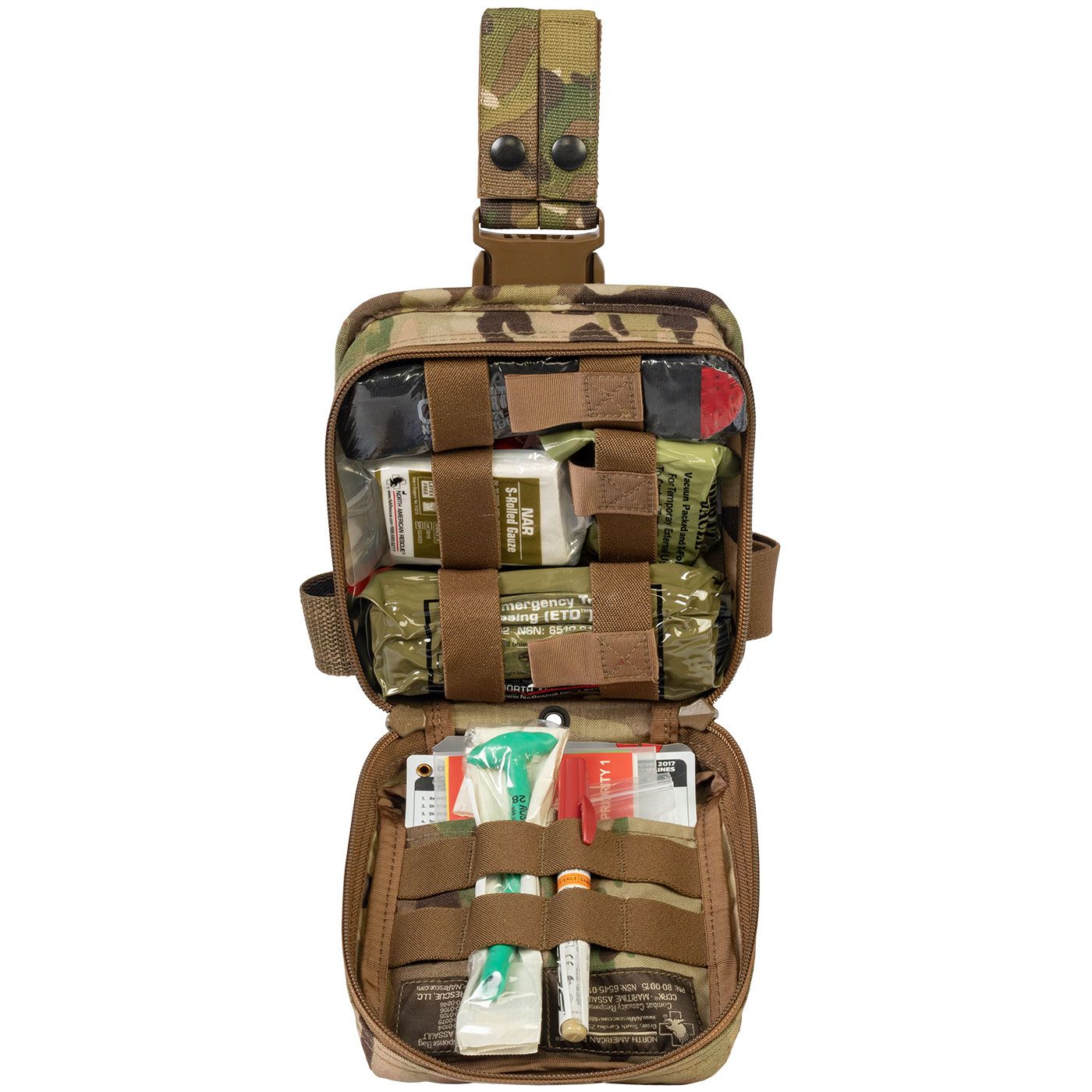Chemical weapons. What to do in the event of a chemical attack?
Content
- What are chemical weapons?
- Types of chemical weapons
- What to do in the event of a chemical attack?
- Sarin gas poisoning
- Symptoms of sarin gas exposure
- First aid in case of sarin gas attack
- Chlorine and ammonia poisoning
- The main symptoms of chlorine damage
- Main symptoms of ammonia damage
- First aid for chlorine or ammonia poisoning
- Mustard gas poisoning
- The main symptoms of mustard gas exposure
- First aid for mustard gas exposure
- Recommendations that can save lives
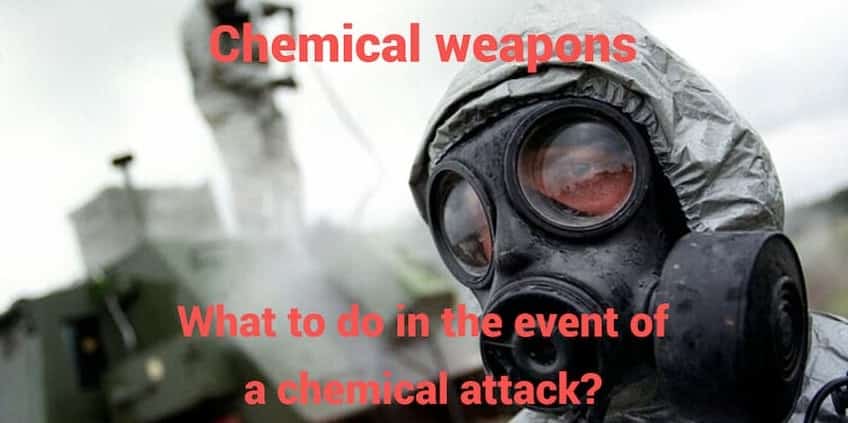
Chemical weapons are one of the most dangerous forms of weapons of mass destruction, using toxic chemicals to harm people, animals or the environment. The threat of their use can cause mass casualties, health damage and significant environmental impact.
In today's world, given the instability of some regions, the threat of a chemical attack has become a reality that civilians may face. Therefore, it is extremely important to know what to do in the event of such a threat to protect your health and life.
What are chemical weapons?
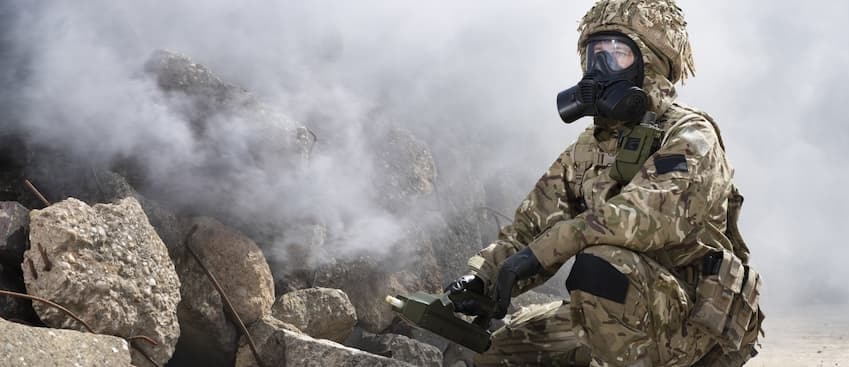
Chemical weapons are a type of weapon of mass destruction based on the use of toxic chemicals. Their main purpose is to cause significant harm to humanity, especially in war, by causing serious injury or even death. Chemical weapons can cause various forms of injury, such as asphyxiation (suffocation), burns or other severe physical damage.
There are several forms of chemical weapons, including gases, powders and liquid solutions. Contact with such toxic substances can occur through the respiratory tract, skin, mucous membranes, and contaminated soil. If land or water is contaminated, the areas become unsafe to be in, which can make it difficult or impossible to use them. It is important to understand that chemical weapons have long-term effects that can affect the environment and human health for a long time.
Types of chemical weapons
Chemical weapons are classified into several main categories depending on their mechanism of action and the effects they cause. The main types of chemical warfare agents include:
- Skin or blistering agents. These substances cause severe pain and irritation to the skin, eyes and mucous membranes, leading to the formation of painful blisters filled with fluid. A classic example is mustard gas, also known as "mustard gas". Blister agents can cause long-lasting damage and serious health consequences for victims.
- Nerve or nerve agents. These agents, sometimes called nerve gases, affect the nervous system by disrupting the transmission of signals between nerve endings and organs. This can lead to paralysis, seizures, or even death.
- Poisonous substances are asphyxiating. They cause fluid accumulation in the lungs, which can lead to suffocation. The most well-known representatives of this type are chlorine and phosgene, which are used to damage the respiratory system.
- Blood or general toxic agents. These substances are absorbed into the bloodstream and disrupt its normal functioning. One example is cyanide gas, which is extremely toxic and can quickly lead to death.
- Poisonous substances of psychochemical action. Psychoactive substances, that temporarily impair mental functions, can cause disorientation and difficulty in control. They can be used to create chaos and disorganisation in the enemy's ranks.
Some of these agents have a specific odour, making them easier to detect, while others may be odourless or colourless, making them more dangerous due to the difficulty of detection.
What to do in the event of a chemical attack?
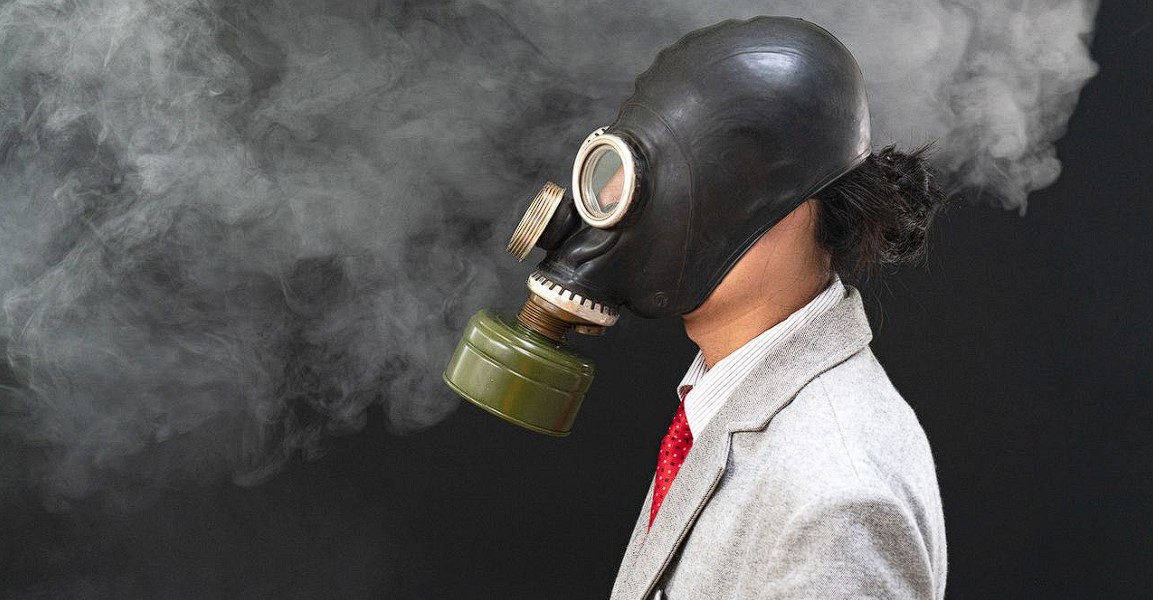
In the event of a chemical attack, it is essential to respond quickly and correctly to reduce the risks to health and life. Here is a general model of behaviour in such situations:
- Ensure the room is airtight. Close all windows and doors tightly to minimise the entry of toxic substances. Cover ventilation openings to prevent them from getting inside. Cracks in windows can be sealed with tape or other sealing materials.
- Get information. Turn on the radio or TV for up-to-date instructions and information from official sources. This will help you understand the current situation and the actions you need to take.
- Switch off all communication systems. Turn off all electrical appliances, gas and water to avoid possible hazards that may arise from the chemicals.
- Evacuate if necessary. If you receive an immediate evacuation notice, wear clothing that is as close as possible to protect your skin. Take a first aid kit and essentials with you. Leave the premises quickly and without panic.
- Protect your airways. If you have a gas mask, be sure to use it to protect your airways. If you do not have a gas mask, place a cotton gauze bandage over your face to help reduce the risk of inhalation of toxic substances.
- Move upwind. When evacuating, try to move across the air or wind to reduce the likelihood of inhalation of toxic substances.
- Do not consume water or food. Avoid consuming water and food that may have been contaminated with chemicals, as this may increase the risk of poisoning.
Always follow the instructions of authorities and emergency responders, as the situation may change rapidly. Remember that your safety and health is a priority in such extreme conditions.
Sarin gas poisoning
Sarin is a man-made chemical warfare agent classified as a nerve agent. In its pure form, sarin is a clear, colourless liquid that is odourless and tasteless. However, sarin can evaporate into a gaseous form and spread in the environment, making it particularly dangerous if released.
The main effect of sarin is to block the enzyme acetylcholinesterase, which disrupts the transmission of nerve impulses. This leads to nerve-paralytic symptoms. Depending on the degree of blockage of this enzyme, there are different levels of sarin poisoning: mild, moderate and severe.
Sarin is heavier than air, so its vapours can concentrate in low-lying areas and basements, increasing the danger in such areas. When sarin is released into the air, it can enter the body through the skin, mucous membranes of the eyes and respiratory system. If a person's clothing is contaminated with sarin gas, it can continue to evaporate and cause harm to people in the vicinity.
Signs of sarin gas poisoning can appear within seconds of inhalation of the gas vapour. In the case of contact with liquid sarin, symptoms may appear after several minutes or hours. The severity of poisoning depends on the concentration of the gas and the duration of exposure.
Sarin has been used in terrorist attacks, notably in Japan in 1994 and 1995, highlighting its danger as a weapon of mass destruction.
Symptoms of sarin gas exposure
Sarin is an extremely toxic nerve agent, and its effects on the body are manifested in a number of distinct symptoms. Exposure to sarin can have serious consequences, and it is important to know the signs of exposure to ensure timely medical care.
The main symptoms:
- Double vision and pain when moving the eyeballs: Patients may complain of double vision and discomfort when moving their eyes.
- Visual impairment and pain in the eyes: There is also pain and blurred vision.
- Increased sweating: Intense sweating is a characteristic symptom.
- Heavy salivation: Increased saliva production often accompanies lesions.
- Tachycardia and bradycardia: There is an alternation of fast and slow heartbeats.
- High or low blood pressure: May vary depending on the extent of the lesion.
- Bronchospasm: It resembles an asthma attack accompanied by difficulty breathing.
- Nausea, vomiting and/or abdominal pain: Frequent manifestations indicative of digestive tract involvement.
- Weakness and headache: Patients experience generalised weakness and headache.
- Confusion, dizziness: There may be impaired consciousness and coordination.
- Seizures and paralysis: In severe cases, seizures and paralysis, including paralysis of the respiratory muscles, may occur, which can lead to rapid death.
If sarin comes into contact with the skin, even in small amounts, sweating and muscle spasms may occur at the site of contact.
High doses of sarin can cause critical conditions:
- Loss of consciousness: Severe damage can lead to coma.
- Convulsions: Severe seizures can make things more difficult.
- Paralysis: Can include both partial and complete paralysis, which can be life-threatening.
- Respiratory arrest: Paralysis of the respiratory muscles can quickly lead to death.
Knowing these symptoms allows you to respond quickly to cases of sarin exposure and provide the necessary medical care.
First aid in case of sarin gas attack
In the event of a sarin attack, a number of measures must be taken immediately to minimise the damage. Here are step-by-step instructions on how to proceed:
- Leave the danger zone quickly. If a sarin gas release occurs in an open area, go to the highest floor possible, as sarin is heavier than air and tends to settle at lower levels.
- Remove contaminated clothing. If sarin comes into contact with clothing, remove it as soon as possible to avoid further exposure.
- Clean the skin. If sarin gets on your skin, wash it with plenty of soap and water to remove any residue.
- Rinse your eyes. If sarin gets in your eyes, flush them with running water or saline at room temperature for 10–15 minutes. If you wear contact lenses, remove them before rinsing and do not put them back on.
- Do not induce vomiting. If sarin is ingested, do not attempt to induce vomiting. Do not drink water or any other liquids.
- Apply antidotes. The antidote for sarin is atropine solution.
For mild lesions, inject 0.1% atropine solution, 1 ml subcutaneously 3–4 times a day. In moderate lesions, inject 2-4 ml of atropine subcutaneously, repeating 1–2 ml every 20–30 minutes until the condition improves or symptoms of atropinisation appear (pupil dilation, dry skin, suppression of saliva secretion, tachycardia). In severe seizures, inject 4-6 ml of atropine subcutaneously, repeating 1–2 ml every 3–8 minutes until seizures stop or symptoms of atropinisation appear.
Alternatively, for adults and adolescents in mild to moderate lesions: 2-4 mg of atropine intramuscularly. For children: in infants from 0 to 2 years of age - 0.05 mg/kg intramuscularly; in children from 3 to 7 years of age - 1 mg intravenously; in children from 8 to 14 years of age - 2 mg intravenously. In severe lesions: in adults and adolescents - 6 mg intramuscularly or 5 mg intravenously. For children: in infants from 0 to 2 years of age - 0.1 mg/kg by mouth or IV; in children from 3 to 7 years of age - 0.1 mg/kg by mouth or IV; in children from 8 to 14 years of age - 4 mg by mouth or IV.
Repeat the initial dose of atropine (maximum 2 mg) every 5–10 minutes until symptoms subside. Use cholinesterase reactants. Dipiroxime (15% solution, 1 ml intravenously or subcutaneously) may be required in the first hours after the injury. Use benzodiazepines for seizures. This will help control seizures and provide additional support for the patient.
All of these measures are critical to reducing sarin exposure and ensuring the survival of the victim.
Chlorine and ammonia poisoning
Chlorine is a poisonous substance with an asphyxiating effect. It is a yellow-green gas with a pungent, irritating odour. Chlorine is stored and transported in liquid form. When liquid chlorine is released into the atmosphere, it quickly turns into a gas and spreads, making it dangerous when it comes into contact with air.
Ammonia is a toxic gas or liquid that can seriously affect the human body. In high concentrations, ammonia can be fatal. Household ammonia has a much lower concentration and rarely causes burns, but it has a pronounced irritating effect.
The main symptoms of chlorine damage
In case of chlorine exposure, a variety of symptoms can occur, signalling the negative impact of this toxic substance on the body:
- Blurred vision: Chlorine exposure can lead to blurred vision.
- Burning pain, redness and blisters on the skin: If the gas comes into direct contact with the skin, pain, redness and blistering may occur.
- Burning sensation in the nose, throat and eyes: Chlorine causes irritation of the mucous membranes of the respiratory tract and eyes.
- Difficulty breathing or shortness of breath: You may experience breathing problems that make it difficult to breathe.
- Nausea and vomiting: Symptoms indicating generalised poisoning and irritation of the gastrointestinal tract.
- Watery eyes: Excessive tearing is also a common reaction to chlorine exposure.
Main symptoms of ammonia damage
Ammonia exposure can manifest itself through a number of symptoms that indicate its toxic effects on the body:
- Chemical burns on the skin: Ammonia can cause serious skin burns on direct contact, resulting in pain and damage to skin tissue.
- Redness of the eyes: Ammonia exposure can cause redness of the eyes, which is a sign of irritation.
- Lacrimation: Increased tear production accompanies eye irritation.
- Nose and throat irritation: Ammonia causes discomfort and irritation in the nose and throat.
- Cough: In response to the irritating effects of ammonia, coughing may occur as a reaction to irritation of the respiratory tract.
- Feeling of suffocation: You may experience a feeling of heaviness in the chest and difficulty breathing.
- Shortness of breath: Ammonia exposure is often accompanied by breathing problems, including shortness of breath.
First aid for chlorine or ammonia poisoning
If you are exposed to chlorine or ammonia, you must take immediate action to reduce the negative effects of these toxic substances. Here are the steps to follow:
- Leave the hazardous area quickly. Get out into the fresh air to avoid further exposure to toxic substances. If a chlorine release occurs, move to higher ground, as chlorine is heavier than air and tends to settle in low-lying areas. If ammonia is released, move towards low-lying areas, as ammonia is lighter than air and rises upwards.
- Wear protective equipment. If possible, wear a gas mask. If not, use a cotton gauze bandage moistened with water or a 5% baking soda solution for chlorine exposure. Use a low concentration of acetic or citric acid solution for ammonia exposure.
- Rinse your eyes. If ammonia or chlorine vapours get into your eyes, remove contact lenses (if you wear them) and rinse your eyes with running water for 10–15 minutes.
- Remove the contaminated clothing. Do not remove the clothing over your head; instead, cut or tear the fabric. Wash your entire body with soap and water as soon as possible to remove any remaining toxic substance.
- There are no antidotes for chlorine and ammonia. The most effective remedy is water, which helps to flush the toxic substances out of the body. The main treatment is to remove the toxins as quickly as possible and provide supportive medical care.
Mustard gas poisoning
Sulphur mustard is a type of chemical weapon that has a skin-invasive effect. During the First World War, this toxin was used for chemical attacks. Mustard gas can be in gaseous, liquid and solid form. It usually has a characteristic odour reminiscent of mustard or garlic.
Wind can carry mustard gas over long distances, and its presence in the environment can last from 1 to 2 days, in particular at low air temperatures, this period can last for weeks or even months. Exposure to mustard gas can have a cumulative effect, accumulating toxic effects over time.
The main symptoms of mustard gas exposure
Mustard gas exposure can manifest itself through a variety of symptoms that indicate a serious toxic effect on the body. This dangerous chemical agent can affect various organ systems, and symptoms may vary depending on the degree of exposure to the toxin:
- Skin: Redness and itching may occur on the skin, which may progress to yellow blisters over time. These blisters are the result of chemical burns and can be very uncomfortable. Skin damage can be quite serious and require specialised medical care.
- Eyes: Eye irritation is one of the first symptoms. This can be accompanied by pain, swelling and tearing. Patients may also experience photosensitivity. Severe lesions can lead to intense pain or even blindness that can last up to 10 days, requiring urgent treatment.
- Respiratory tract: Contact with mustard gas can cause a variety of symptoms in the respiratory tract. These include runny nose, sneezing, hoarseness, shortness of breath and coughing. Inflammation and irritation of the mucous membranes of the respiratory tract can lead to significant breathing problems and require medical attention.
- Digestive tract: Mustard gas can also cause symptoms in the digestive tract, such as abdominal pain, diarrhoea, fever, nausea and vomiting. These symptoms indicate systemic toxicity and may require special treatment to reduce discomfort and prevent complications.
- Bone marrow damage: Chemical exposure to mustard gas can also negatively affect the bone marrow, leading to a slowdown in haemopoiesis (the production of blood cells). This can lead to pancytopenia, a decrease in all types of blood cells, which can cause additional serious health problems such as anaemia, thrombocytopenia and leukaemia.
In general, the symptoms of mustard gas exposure are serious and require urgent medical attention. Although symptoms may vary depending on the degree of exposure, any contact with this toxin is dangerous and requires professional treatment to minimise health damage.
First aid for mustard gas exposure
If you are exposed to mustard gas, it is important to take immediate action to reduce the negative effects of mustard gas on your body. Here are the steps to follow:
- Get out of the danger zone. If the mustard gas release occurred outdoors, climb to the highest possible point. Mustard gas is heavier than air and tends to settle in the lower atmosphere. Therefore, getting to a higher elevation will help to avoid further contact with the toxic gas.
- Remove contaminated clothing. Remove any clothing that may have been contaminated with mustard gas immediately. This will help prevent further contact with your skin.
- Wash the affected areas of skin. Rinse all affected areas thoroughly with plenty of water. A 0.2-0.3% chloramine solution may be used for additional cleaning. This will help remove any remaining mustard gas and reduce the risk of serious skin damage.
- Treat your eyes. If mustard gas gets in your eyes, rinse them with plenty of water. Dark goggles can be worn to protect the eyes from further irritation. If possible, protect your eyes with other available methods until medical attention is available.
- Do not induce vomiting. If mustard gas has been ingested through the mouth, do not attempt to induce vomiting. This can aggravate the situation and lead to additional complications.
- Seek medical attention. After first aid, seek professional medical attention immediately. Doctors will be able to assess the extent of the injury and provide the necessary treatment.
Providing first aid for mustard gas injuries is critical to reducing the risk of serious complications and ensuring further treatment.
Recommendations that can save lives
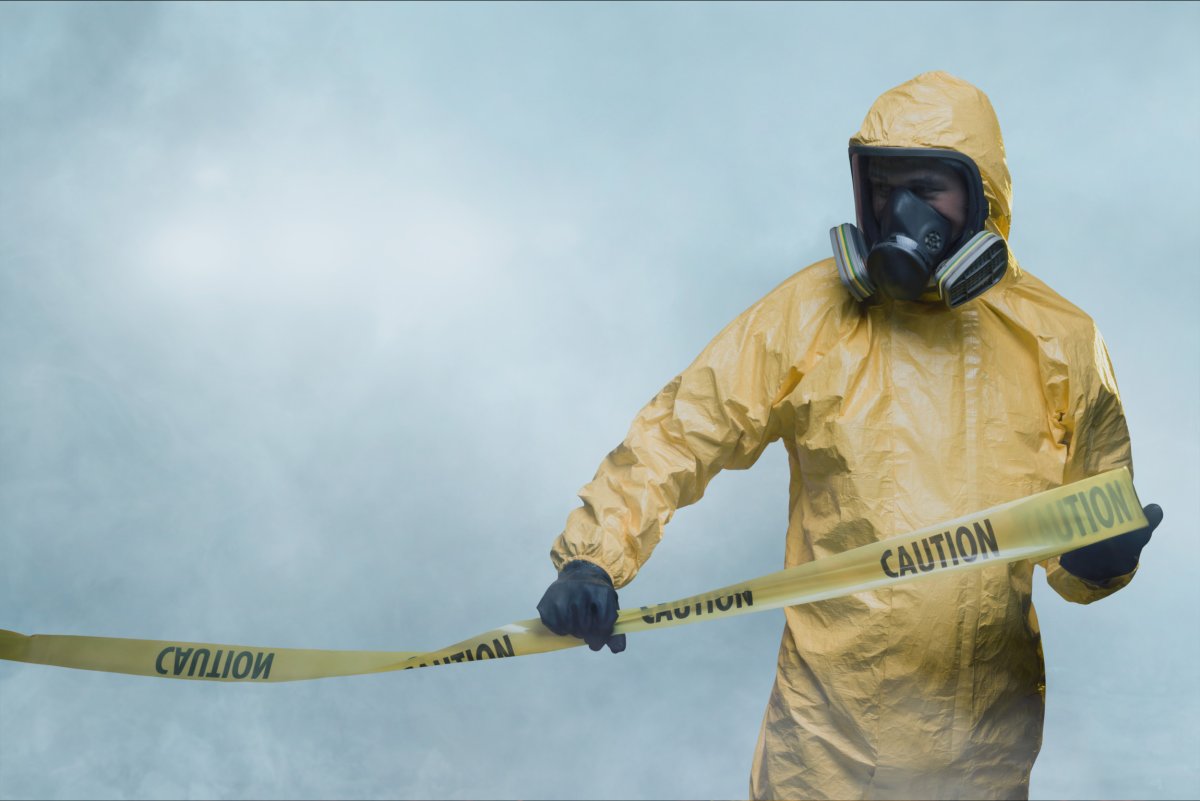
According to the CDC, the following tips are recommended to ensure safety and effective response during a chemical or gas attack:
- Get outdoors quickly. If the attack occurs indoors, get outside immediately and look for a safe place outdoors. If the attack is outdoors, find the nearest shelter, such as a building, where you can take cover.
- Shelter on higher floors. Many gases are heavier than air, so in theory it should be safer on higher floors. However, if it is not possible to determine the type of gas, it is better to find any shelter immediately than to delay.
- Get rid of contaminated clothing. Remove any clothing that may have been contaminated by the gas as soon as possible, as it may continue to give off dangerous vapours. If your clothing must be removed over your head, it is best to cut it with scissors to avoid further contact with the toxic substance. If possible, place contaminated clothing in a sealed plastic bag, although this may not always be available in an emergency.
- Wash skin. After removing contaminated clothing, wash all areas of skin that may have come into contact with the gas with plenty of water. Soap and water is best, but if soap is not available, use plenty of water.
- Treatment of eyes. If gas gets in your eyes, flush them with water for 10–15 minutes. This will help reduce irritation and prevent more serious damage.
- Protect your premises. If you are at home during a chemical attack, cover the windows with a wet blanket to reduce the penetration of gas into the room.
- Avoid mouth-to-mouth resuscitation. If you find a person without signs of life, do not attempt mouth-to-mouth resuscitation, as this can be dangerous in cases of chemical poisoning.
Following these guidelines can significantly reduce the risk of serious injury and increase the chances of safely escaping a dangerous situation.
